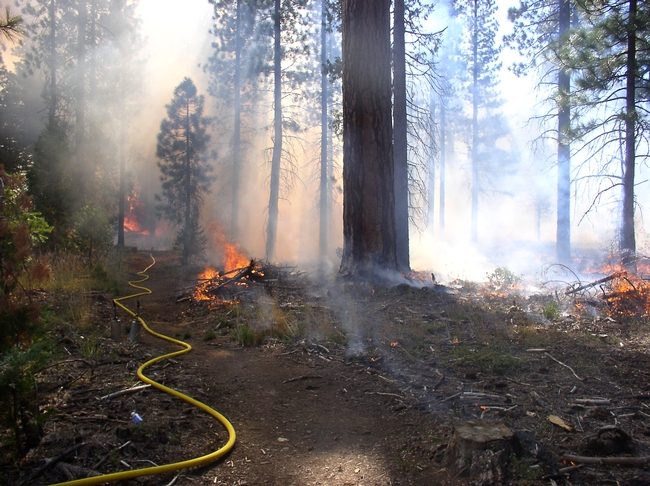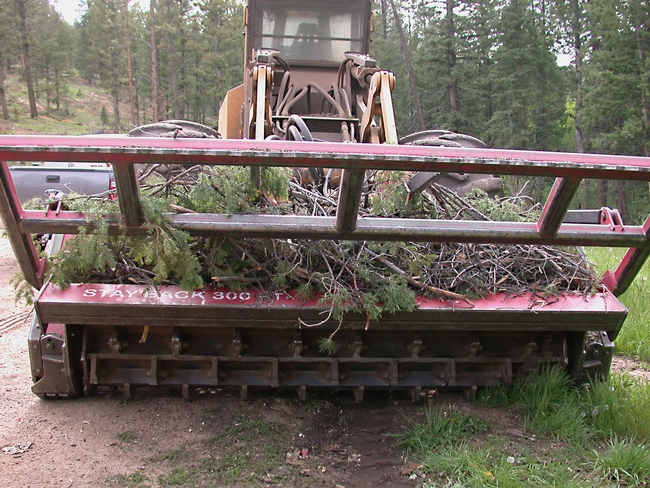Proper land management can help forest owners ease wildfire risk following mass tree die-off
The massive die-off of conifers in the Sierra Nevada between 2012 and 2018 was predictable and unprecedented. Sadly, it is also likely to happen again, said UC Cooperative Extension forestry advisor Susie Kocher.
To help landowners manage forests in a way that minimizes the risk of such catastrophic tree die-off and the threat of uncontrolled wildfire, Kocher and two colleagues produced a 20-page publication that summarizes current research on tree mortality and outlines actions that can be taken to make the forest more resilient. The publication, Mass Tree Mortality, Fuels, and Fire: A Guide for Sierra Nevada Forest Landowners, is available for free download from the UC Agriculture and Natural Resources catalog.
Written by Stanford graduate student Devin McMahon (now graduated), UC Berkeley Cooperative Extension forest health specialist Jodi Axelson and Kocher, the publication presents the extent of the die-off in the Sierra Nevada, and describes different factors that contributed to the vast loss of tree life – including land management practices, weather patterns and geography. It includes detailed reporting on the mortality's impacts on fuels and fire risk so landowners and managers can understand and develop strategies to prevent similar destruction in the future.
While about two-thirds of California's 33 million acres of forests are public lands held by state and federal government agencies, the rest is in private hands. Large companies manage millions of acres for commercial timber production, but about 9 million acres are owned by individuals. Nearly 90% of individuals own 50 acres or less; 87,000 landowners have 10 acres or more of forest.
“That's a really large number of people,” Kocher said. “That's one of the reasons why it is so difficult for landowners to manage land to improve forest health and reduce fire risk. It's not economical to do forest management on small areas.”
It's also very complicated. As natural processes play out over time in a forest with mass mortality, the fire risk changes dramatically.
“In the new publication, we help people understand the nuances of forest management so they understand what actions are most appropriate throughout the whole cycle,” she said.
Assessing and addressing the fire risk
The publication provides an overview of fire risk reduction. A table lays out the seven components of fire risk – fuel load, fuel moisture, fuel continuity, probability of ignition, weather conditions, topography and vulnerability to fire – along with mitigation actions for each that landowners can take.
Intentional, controlled burning, or prescribed fire, is often the most effective way to decrease fuel loads and future risk from fires, the researchers wrote. Other management actions include masticating – chewing up brush and branches with specialized equipment – felling and removing dying and dead standing trees, and thinning live trees.
The authors conclude with a glimmer of hope for the future of California forest lands. “Carefully planned forest management can reduce the amount and continuity of fuel on the landscape and limit the risk of destructive fire after tree mortality.”





Posted by Jeff Carbine on January 26, 2022 at 5:44 AM